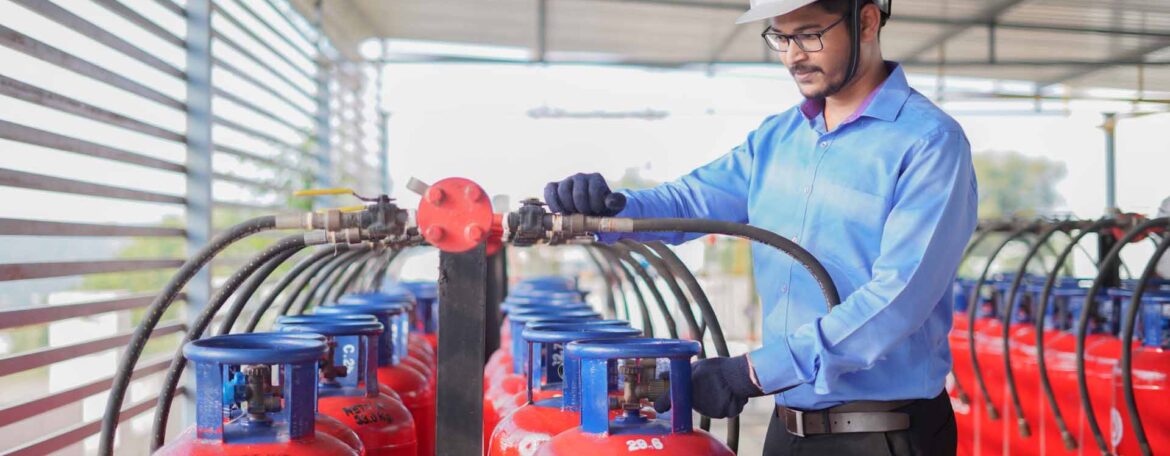Introduction:
Liquefied Petroleum Gas (LPG) is a widely used fuel source for cooking, heating, and powering appliances. However, like any other fuel, LPG poses certain risks and hazards if not handled and used properly. In this blog, we will discuss the importance of LPG safety precautions and handling guidelines, and provide tips and best practices for ensuring safe use and minimizing risks.
Understanding LPG Risks and Hazards:
Before we dive into the safety precautions and handling guidelines, it’s essential to understand the risks and hazards associated with LPG. Some of the most common risks and hazards include:
- Explosions and Fires: LPG is a highly flammable substance, and can ignite easily if not handled properly.
- Leaks and Escapes: LPG leaks and escapes can occur due to faulty cylinders, regulators, or hoses, and can lead to explosions or fires.
- Carbon Monoxide Poisoning: LPG appliances can produce carbon monoxide if not properly installed, maintained, or ventilated.
- Burns and Injuries: LPG can cause burns and injuries if not handled carefully, particularly when connecting or disconnecting cylinders.
LPG Safety Precautions:
To minimize the risks and hazards associated with LPG, it’s essential to follow these safety precautions:
- Store LPG Cylinders Properly: Store LPG cylinders in a well-ventilated area, away from heat sources, sparks, and flames.
- Inspect Cylinders Regularly: Regularly inspect LPG cylinders for signs of damage, rust, or corrosion.
- Use Proper Installation and Maintenance: Ensure that LPG appliances are properly installed, maintained, and serviced by qualified technicians.
- Use Correct Hoses and Regulators: Use correct hoses and regulators that are compatible with your LPG appliances and cylinders.
- Keep LPG Appliances Away from Children and Pets: Keep LPG appliances out of reach of children and pets to avoid accidents.
LPG Handling Guidelines:
When handling LPG cylinders, appliances, and equipment, follow these guidelines:
- Wear Protective Gear: Wear protective gear, such as gloves and safety glasses, when handling LPG cylinders and appliances.
- Use Proper Lifting Techniques: Use proper lifting techniques when handling LPG cylinders to avoid injuries.
- Connect and Disconnect Cylinders Carefully: Connect and disconnect LPG cylinders carefully to avoid leaks and escapes.
- Check for Leaks Regularly: Regularly check LPG appliances and cylinders for signs of leaks or escapes.
- Follow Manufacturer Instructions: Follow manufacturer instructions for LPG appliances and equipment to ensure safe and proper use.
Additional Safety Tips:
Here are some additional safety tips to keep in mind when using LPG:
- Never Leave LPG Appliances Unattended: Never leave LPG appliances unattended while they are in use.
- Keep Emergency Numbers Handy: Keep emergency numbers handy, such as the fire department and ambulance services.
- Have a Fire Extinguisher Nearby: Have a fire extinguisher nearby when using LPG appliances.
- Regularly Check and Maintain Appliances: Regularly check and maintain LPG appliances to ensure they are in good working condition.
- Dispose of LPG Cylinders Properly: Dispose of LPG cylinders properly by returning them to the supplier or taking them to a designated disposal facility.
Conclusion:
LPG safety precautions and handling guidelines are crucial for ensuring safe use and minimizing risks. By following these guidelines and tips, you can help prevent accidents, injuries, and fatalities associated with LPG. Remember to always handle LPG cylinders, appliances, and equipment with care, and to follow manufacturer instructions and safety guidelines. Stay safe and responsible when using LPG!

